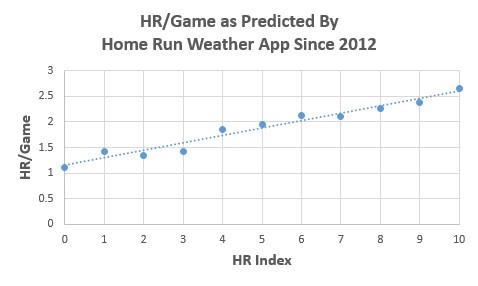As Kevin O’Leary Would Say, "Yeah, But How Do I Make MONNNEEYYY?"
In many ways, we’re like Mr. Wonderful, Cubes, and the other investors on Shark Tank. We’re investing our time in the form of daily fantasy research, and we need to try to maximize our returns on that time. We want the largest possible daily fantasy profits per minute/hour spent researching.
We might be able to squeeze some benefits out of studying and understanding batted ball profiles, but it could still not be worth our time if the advantages aren’t large enough. Remember, every minute you spend researching one stat is a minute you lose researching every other possible topic.
As I’ve mentioned, I think focusing on the “small” factors can actually lead to a huge edge in aggregate because they’re low-hanging fruit; much of the value of studying other “larger” stats or trends has been sucked out by the general public. That’s not the case with batted ball profiles, which both aren’t priced into daily fantasy salaries and aren’t widely utilized in the daily fantasy marketplace.
Still, we can end up going down a rabbit hole with some of these stats and angles, so it’s important to make sure we’re getting the biggest bang for our buck. It’s pretty easy to research which batters hit a lot of fly balls, but there are certain times when it’s most valuable to emphasize the data. Our edge will come in finding not only the right players, but the exact situations and conditions that will allow for them to offer the most value.
When to Emphasize Certain Batted Ball Profiles
Whether I’m playing in cash games or GPPs, I want batters who can either hit a home run or steal a base with regularity. I’ll rarely roster a player who can’t hit double-digit homers or steal double-digit bags over the course of a season. The reason for that is because the risk/reward surrounding MLB batters is asymmetrical, with every batter possessing big risk (anyone can go 0-for-4) but some having dramatically more upside than others.
Unless I’m paying for steals, I don’t want batters who consistently put the ball on the ground. So for the most part, I’m trying to pay for batters who are likely to put the ball into the air in a specific game. This entire course has been dedicated to how to do that, but what about once the ball is in the air?
For fly ball hitters, external factors—things like wind speed, temperature, air density, ballpark dimensions, and so on—are more important than for ground ball batters. We want batters who are going to hit fly balls, but we also want those who are in situations in which fly balls will turn into home runs. That is how we make money on fly ball batters.
I’ve written a lot about how much the weather affects fantasy baseball scoring. Most players know the weather is important, but I think I probably emphasize it more so than anyone. I’ve created a model that examines a variety of weather factors—such as wind speed and direction, humidity, altitude, temperature, and so on—and then assigns a home run likelihood to each game. This helps me determine where fly balls are the most likely to transform into dongs.
I got the idea for my model after using the HR Weather App, which was created by meteorologists and assigns a 1-to-10 weather rating to each game, estimating the probability of home runs being hit using nothing but weather factors. The app doesn’t examine ballpark factors or offensive strength or pitcher quality—just the weather—and it has performed ridiculously well.

Games with a weather rating of 10 have seen over twice as many home runs as those with a 0 and around 25 percent more home runs than games with a rating of 5. If this isn’t evidence of the importance of weather in baseball, I don’t know what is. It also shows how much more important external factors—like the weather and park—are to fly ball hitters as compared to ground ball hitters.
The Bottom Line
So this is it. I hate goodbyes. Before leaving you, I wanted to create a very specific plan of action as it relates to benefiting from batted ball profiles.
1. Use FanGraphs to research batters’ batted ball profiles (specifically fly ball rates) over the past year.
2. Match up batters in the appropriate way with pitchers. Fly ball batters can effectively be used versus any pitcher type, whereas
neutral and ground ball hitters should be used versus fly ball pitchers (if the goal is to gain access to extra-base hits).
3. Consider the type of pitches a batter will face. Fly ball hitters are much better versus fastballs than any other pitch type.
4. When you stack, target offenses with a lot of fly ball hitters.
5. Use the HR Weather App and use the weather rating in conjunction with the ballpark to determine a game’s home run upside. You don’t need to always avoid batters in games with a low weather rating, but you should consistently have the most exposure to those with the most favorable home run conditions.
6. Make money.